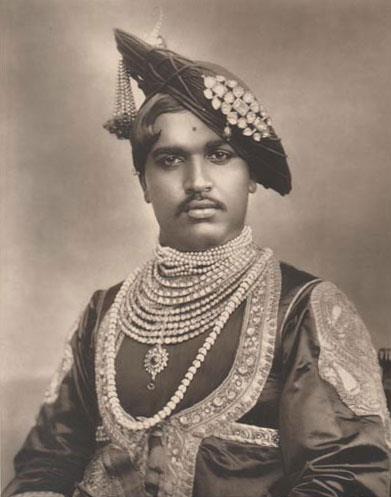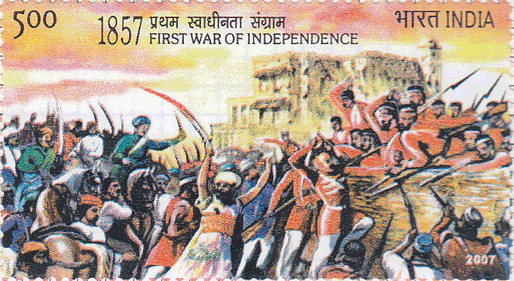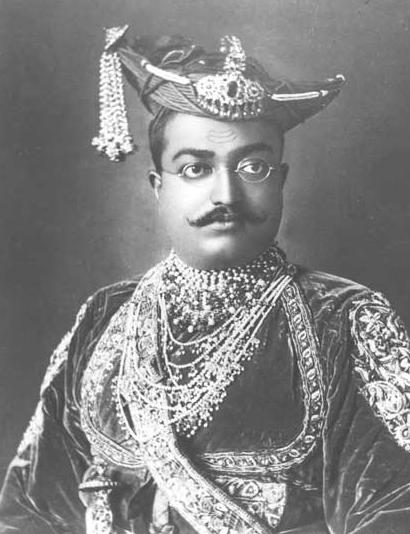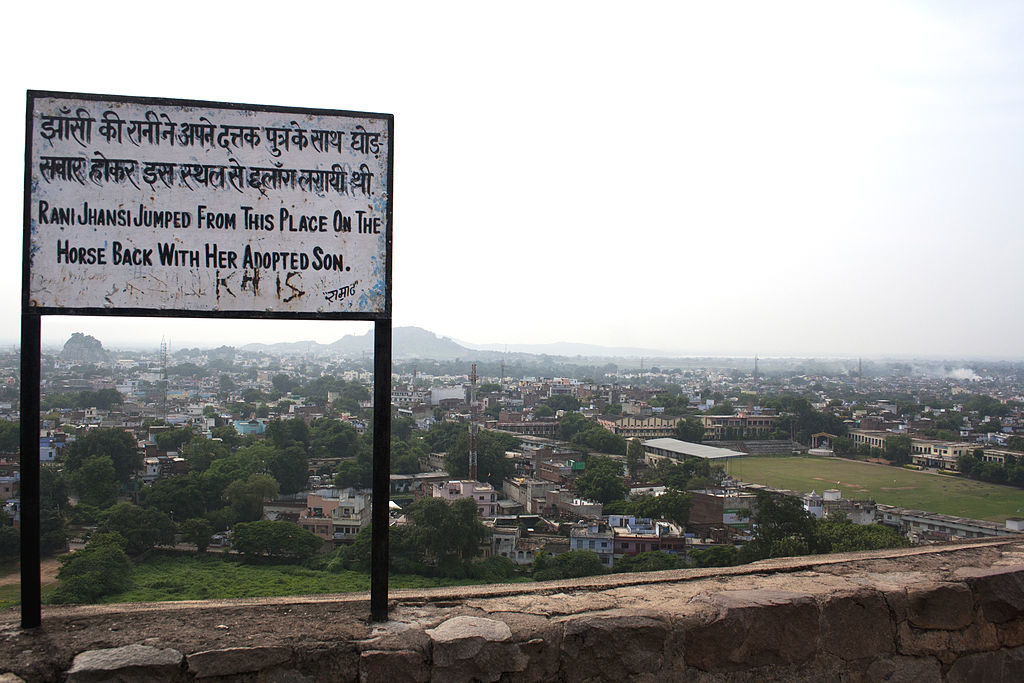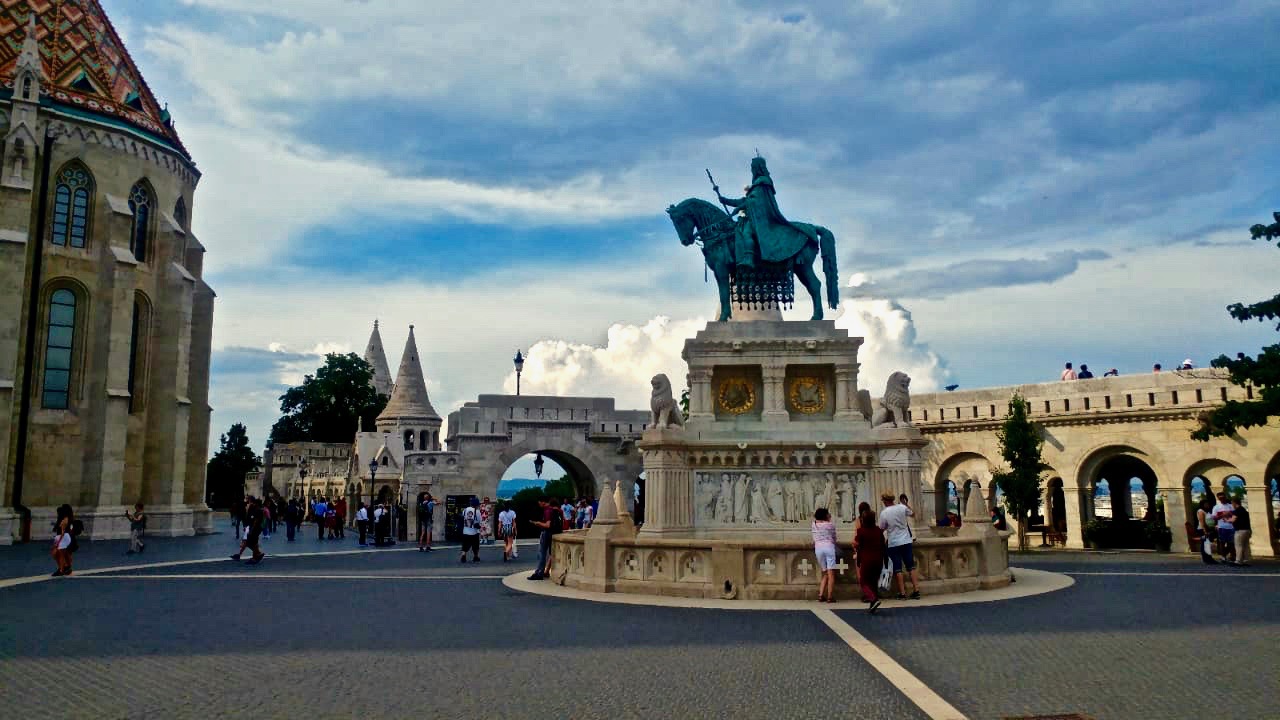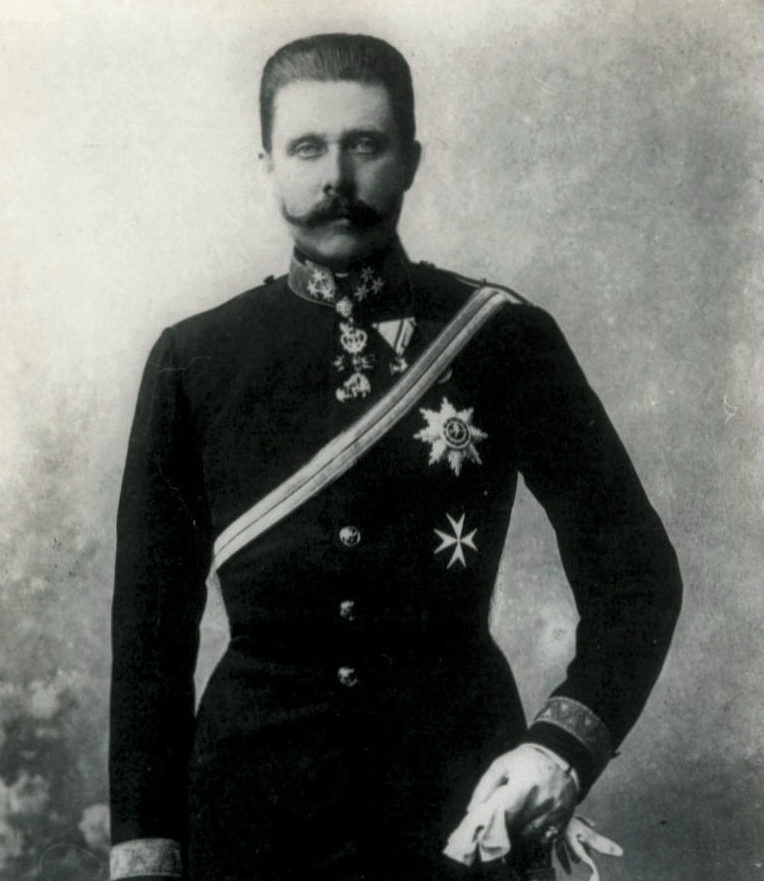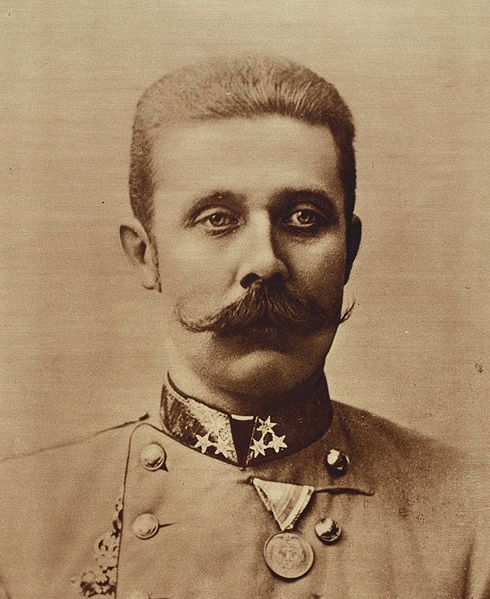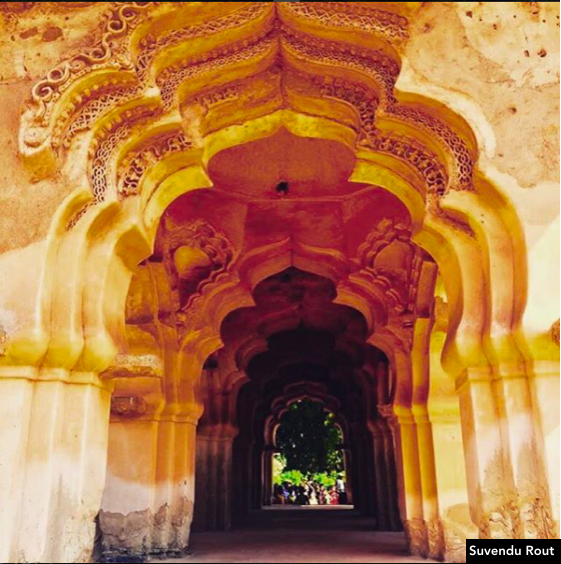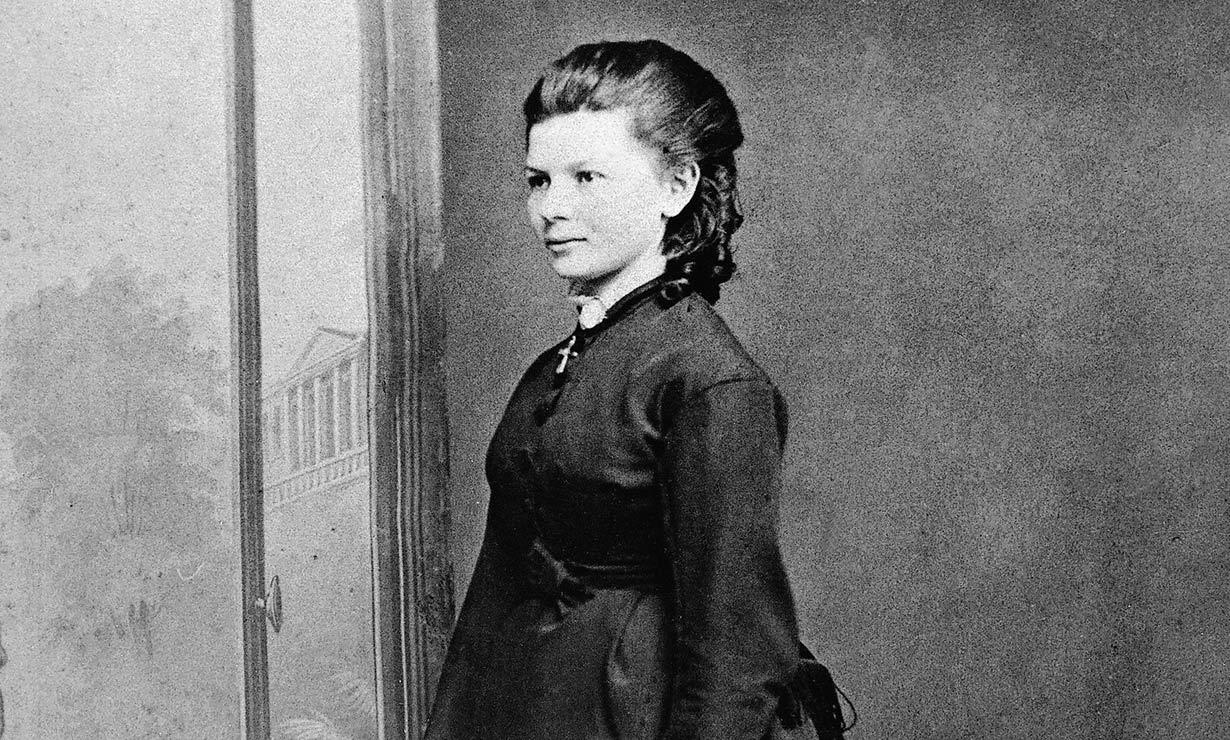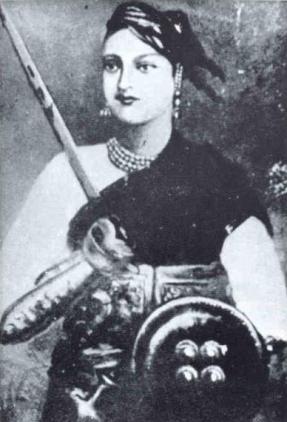
Rani Lakshmibai
Dangerous Woman: Rani Lakshmibai of Jhansi
-article by Jack Edwards
Born: 19 November 1828 in Varanasi, India
Died: 18 June 1858 in Kotah-ki-Serai, near Gwalior, India
Early Life
When she was born she was named Manikarnika Tambe. Her mother died when she was four years old. Her father, Moropant Tambe, worked in the court of the Peshwa (Prime Minister) Bajirao II, who raised Manikarnika like his own child. She was educated at home and was taught shooting, horse-riding and fencing. Through the Peshwa’s influence she was married to the Maharaja of Jhansi, Raja Gangadharrao Newalkar, in May 1842. Keeping with Indian custom, she changed her first name to Lakshmibai, in honour of the Hindu goddess Lakshmi.
Tension with the East India Company
In 1851 they had a son they named Damodar Rao, but he died after four months. In November 1853, on the day of the Raja’s death, they adopted they adopted his cousin’s son, who they also named Damodar Rao. The Raja’s final wishes were for the child to be treated with respect and that the government of Jhansi should be given to his widow for her lifetime. These wishes were presented to Lord Dalhousie, Governor-General of India, who refused to honour them. He refused to accept Damodar Rao’s adoption, denied Lakshmibai’s right to rule and applied the Doctrine of Lapse, the East India Company’s policy which gave them the power to annex any state or territory when its ruler died without a legitimate heir. Lakshmibai was offered a pension of 5000 rupees as a concession from the company, but she refused it. She made numerous petitions to the British parliament, but was ignored, allowing the Company to occupy Jhansi territories without resistance.
Mutiny in Jhansi
On 10 May 1857 the Indian Rebellion broke out in Meerut. It was largely ignored and soon it spread through Northern India. At this time Jhansi was garrisoned by a detachment of Indian soldiers. It was commanded by Captain Gordon, the chief civil authority, and Captain Dunlop, commander of the troops. On 5th June 1857 the entire garrison mutinied against the British. Dunlop was shot while Gordon and Captain Skene, the police superintendent, helped around 55 English and Eurasian people escape to the fort. The mutineers soon began attacking the fort. Gordon was killed by a stray cannon shot, so Skene took charge of the fort’s defences. The mutineers sent messengers under a flag of truce to the fort, offering those holed up in the fort safe passage if they surrendered. Skene accepted the terms and the gates were opened. However, the mutineers broke their promise and seized all those remaining and slaughtered them, including the women and children.
The Rani’s involvement in the massacre is still debated today. According to one contemporary army doctor, Thomas Lowe, she was personally responsible. He described her as ‘the young rani upon whose head rested the blood of the slain.’ However, according to historian Kincaid ‘there was no reason why she would want to murder them; her interests lay in the opposite direction.’ He quotes a letter sent from a man who survived the mutiny to the Rani’s adopted son who states ‘the poor thing took no part in the massacre… she supplied them with food for two days after they had gone into the fort.’
Rani of Jhansi
Following the mutiny, and with all the British officials now dead, Lakshmibai assumed control of Jhansi, on behalf of the British Empire, making her the Rani of Jhansi. She faced some opposition to her rule. First from her cousin, Sadashivrao, who took control of the fort at Karrara and declared himself the Raja of Jhansi. The Rani gathered her troops and stormed Karrara, defeating her cousin. She then faced tougher opposition from the Rana of Orcha, who sent 20,000 troops to conquer Jhansi. However, she was able to quickly summon an army and quickly defeated him.
After defeating her rivals, she fully devoted herself to the state’s management. Despite having advisers, including her chief minister Lakshmanrao Bande, she was also an educated woman and would often pass written orders herself. She also had an input in the administration of the state’s economy. As a keen rider, she also chose her troops’ horses herself and was deemed one of the best judges of horses in India. From August 1857 to January 1858 Jhansi, under the Rani’s rule, was at peace.
The Rani rebels
In March 1858 Sir Hugh Rose, commander of the British forces in India, arrived at Jhansi and demanded that the city surrender to the British, warning that if they did not then the city would destroyed. At first, the Rani wanted to send a deputation to negotiate with Rose. However, her advisers wanted independence from the British and overruled her orders. After deliberating the Rani announced “We fight for independence. In the words of Lord Krishna, we will if we are victorious, enjoy the fruits of victory, if defeated and killed on the field of battle, we shall surely earn eternal glory and salvation.” After this declaration the British besieged the city on 23 March 1858.
The Rani sent word to Nana Sahib, the new Peshwa and the Rani’s childhood friend, who sent 20,000 troops to her aid. Despite this, on 2 April, after several days of bombardment and cannon fire, the British breached the city walls and flooded into the city. Street fighting broke out in which no one was shown mercy, not even women and children. After realising that resistance was futile the Rani slipped out of the fort at night on the 4 April. According to legend she leapt from the fort walls onto her horse with her adopted son, Damodar Rao, on her back. She was escorted by around 300 troops and met with the Peshwa at Kalpi.
On 22 May the British forces attacked Kalpi. The Indian forces were commanded by the Rani herself, who was dressed as a soldier during the battle, but they were again defeated. She and the Peshwa fled and joined with the Indian forces at Gwalior. They took control of the fort and claimed all the treasure and guns held there. The Rani pleaded with the Peshwa to distribute the treasure among their battle-weary soldiers, but she was ignored. The troops began to desert in great numbers; those who remained were greatly demoralised. The British soon attacked Gwalior and retook the city.
On 17 June, in Kotah ki Serai, a large contingent of British troops, commanded by General Smith, fought with the Rani’s squadron. According to eyewitness statements, she put on a soldiers uniform and fought against the enemy soldiers. She fought gallantly, but was mortally wounded and died on the field of battle. Her body was recovered by her attendants and was burned with all due ceremony.
Legacy of Lakshmibai
In the British report of this battle, Hugh Rose commented that Rani Lakshmibai is “personable, clever and beautiful” and she is “the most dangerous of all Indian leaders”. She became a symbol of resistance to the British Raj for Indian nationalists. A women’s unit of the Indian National Army was formed in October 1942 and was named the Rani of Jhansi Regiment.
Today statues of Lakshmibai are seen in many places of India, which show her and her son tied to her back. There is even a poem about her, written by Subhadra Kumari Chauhan. An emotionally charged description of the life of Rani Lakshmibai, it is often taught in schools in India. An excerpt from the poem goes:
How valiantly like a man fought she /
The Rani of Jhansi /
On every parapet a gun she set /
Raining fire of hell /
How well like a man fought the Rani of Jhansi /
How valiantly and well!
————————
Know something more about Rani Lakshmibai? Comment below. Share this article with your friends to inspire them as well!
————————
This is a special blog celebrating our second woman on the second day of Navratri. We’ll be sharing the inspirational life stories of 9 women in 9 days so stay tuned.
————————
Rani Lakshmibai is our 2nd Inspirational Woman.
Coco Chanel was our first. Read Coco Chanel’s life story here.
Bertha Benz is third. Click here to read.
————————
Picture Curtesy- Google ImagesNOTE: The Bibliography for this post is missing. Please help us credit the sources that deserve it. If you believe your work, or a work you know of needs to be cited here, please write to editor@giglee.in to inform us. DISCLAIMER: The intention of this article is not to hurt anyone's sentiments. The thoughts expressed in the article are purely those stated by the author of the work. The information provided on this website may not be complete, reliable, accurate and/or updated. The details you share with the website will not be shared or sold. We are not liable if in case of theft, your data is stolen. The content on this website is provided without any warranties whether express or implied. If you have a doubt, query or complaint please write to editor@giglee.in and we shall respond as soon as possible.





